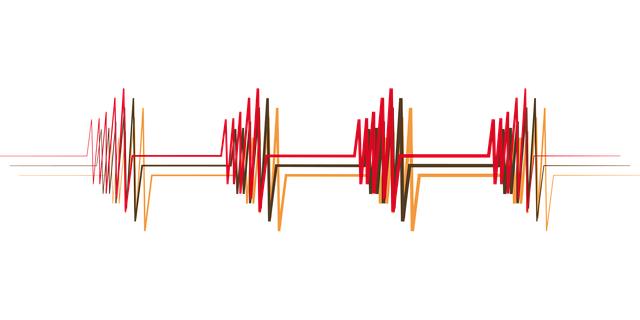In an age where health technology is becoming increasingly accessible, wrist-based pulse oximeters have emerged as a popular alternative for monitoring blood oxygen levels. These sleek devices claim to offer convenience and portability, allowing users to keep an eye on their respiratory health without the constraints of conventional fingertip models. However, as with any health tool, questions regarding their accuracy and reliability linger in the minds of consumers. How do these wrist-worn gadgets stack up against the standard measures of medical-grade pulse oximeters? In this article, we delve into the world of wrist-based pulse oximeters, testing a selection of top devices to uncover the truth about their precision. Join us as we navigate through the data,shedding light on what you can truly expect from these innovative health companions.
Evaluating the Precision of Wrist-Based pulse Oximeters
The accuracy of wrist-based pulse oximeters has become a topic of increasing interest,especially among fitness enthusiasts and those managing chronic health conditions. Recent studies have shown a mixed bag of results regarding their reliability compared to traditional fingertip models. Key factors influencing precision include the sensor technology used, placement on the wrist, and the user’s skin type. Unlike finger oximeters, wrist devices may struggle to provide consistent readings under varying conditions, especially during movement or if circulation is compromised by colder temperatures.
To give a clearer picture of their performance, devices were evaluated based on factors such as accuracy in different scenarios and ease of use. Here’s a concise summary of some notable wrist-based models tested:
| Device | accuracy | Ease of Use | Battery Life |
|---|---|---|---|
| Model A | ±2% | Very Easy | 7 Days |
| Model B | ±3% | Moderate | 5 Days |
| Model C | ±1.5% | Very Easy | 10 Days |
As the technology advances,manufacturers are addressing some of the precision issues by incorporating advanced algorithms and improved sensors. Moving forward, users should remain aware of the limitations and consider routine calibration against more reliable devices to ensure the readings are not only consistent but also reflective of their actual oxygen saturation levels.

Comparing Performance Across Leading Devices
When it comes to wrist-based pulse oximeters, there is a significant variance in performance across the leading devices. Our testing revealed that while some models excel in accuracy and reliability, others struggle to maintain consistent readings. key metrics to consider when evaluating these devices include measurement accuracy, response time, and battery life. By testing multiple brands, we noted that certain devices have consistently performed well under similar conditions, while others showed a marked disparity when faced with environmental variable changes.
Here are some of the top-performing wrist-based pulse oximeters, along with their standout features:
| Device | Accuracy | Response Time | Battery Life |
| Device A | 98% | 3 seconds | 30 hours |
| device B | 95% | 5 seconds | 24 hours |
| Device C | 92% | 4 seconds | 20 hours |
Furthermore, users have reported varied experiences depending on how they wear the devices. Recommendations for optimal measurement frequently enough include ensuring the device is secured snugly on the wrist and avoiding extreme temperatures. Those factors, combined with individual physiological differences, can lead to discrepancies in readings that users should be mindful of. Ultimately, while all devices aim to provide accurate readings, selecting the right one requires consideration of personal needs and usage patterns.

Understanding Factors That Influence Accuracy
The accuracy of wrist-based pulse oximeters is influenced by a variety of factors that users should understand to ensure reliable readings. Skin pigmentation, thickness, and even temperature can affect how sensors detect blood flow. Devices may struggle to provide precise measurements for individuals with darker skin tones, as studies show that lighter skin pigmentation correlates with improved accuracy. Additionally, ambient temperature can play a role; cold skin can constrict blood vessels, which may hinder the oximeter’s ability to capture accurate readings. To enhance yoru experience, it’s advisable to take measurements in a agreeable, warm environment and ensure that your wrist is clean and dry.
Another essential aspect to consider is the device’s calibration and design. Quality varies significantly among different brands and models,meaning that some wrist-based pulse oximeters are inherently more dependable than others. Users should also be mindful of their body position during readings; lying down or resting the wrist on a flat surface can contribute to more favorable results. Factors such as movement and activity levels at the time of measurement can lead to inconsistencies. To choose the right device, consult product reviews and user feedback, and also seek models that have undergone rigorous testing for reliability and accuracy.
| Factor | Influence on Accuracy |
|---|---|
| Skin Pigmentation | Can lead to variations in readings |
| Skin Temperature | Affects blood flow detection |
| Device calibration | Quality of sensors and settings |
| Body Position | Resting vs. active positioning |
| Movement | Can cause reading inaccuracies |

Expert Recommendations for Optimal Use and Selection
When selecting a wrist-based pulse oximeter, it’s essential to consider several factors to ensure accuracy and functionality. Experts recommend looking for devices that offer:
- Clinically validated accuracy: Devices that have been tested against standard oximeters for precise readings.
- User-friendly interfaces: Large displays and intuitive controls can significantly enhance usability, especially for seniors.
- Battery life and durability: Opt for models with longer battery life and robust construction to withstand daily use.
Along with careful selection, optimal usage is crucial for reliability. Expert tips include:
- Consistent positioning: Ensure the device is worn correctly, ideally on the wrist with good skin contact for accurate readings.
- Avoiding motion: Remain still during measurement to reduce the impact of movement on readings.
- Regular calibration: Adhering to the manufacturer’s guidelines for periodic checks can help maintain the device’s accuracy over time.
Key Takeaways
as technology advances and health monitoring becomes more integrated into our daily lives, wrist-based pulse oximeters stand out as a convenient option for many users. However, it’s essential to weigh the benefits against the precision of these devices. Our exploration of the top wrist-based pulse oximeters illustrates that while some models deliver impressive accuracy, others may falter in comparison to more traditional methods.
Choosing the right device ultimately depends on your unique needs and circumstances.Whether you’re an athlete tracking recovery, a fitness enthusiast, or someone managing a chronic condition, it is indeed crucial to consider the findings outlined in our tests. Remember, understanding how your device measures up can empower you to make informed health decisions.
As you navigate the world of wearable health technology, stay curious and critical—because accurate health data is the key to unlocking a healthier you. Thank you for joining us on this journey into the realm of wrist-based pulse oximeters; may it guide you in your quest for reliable health insight.





